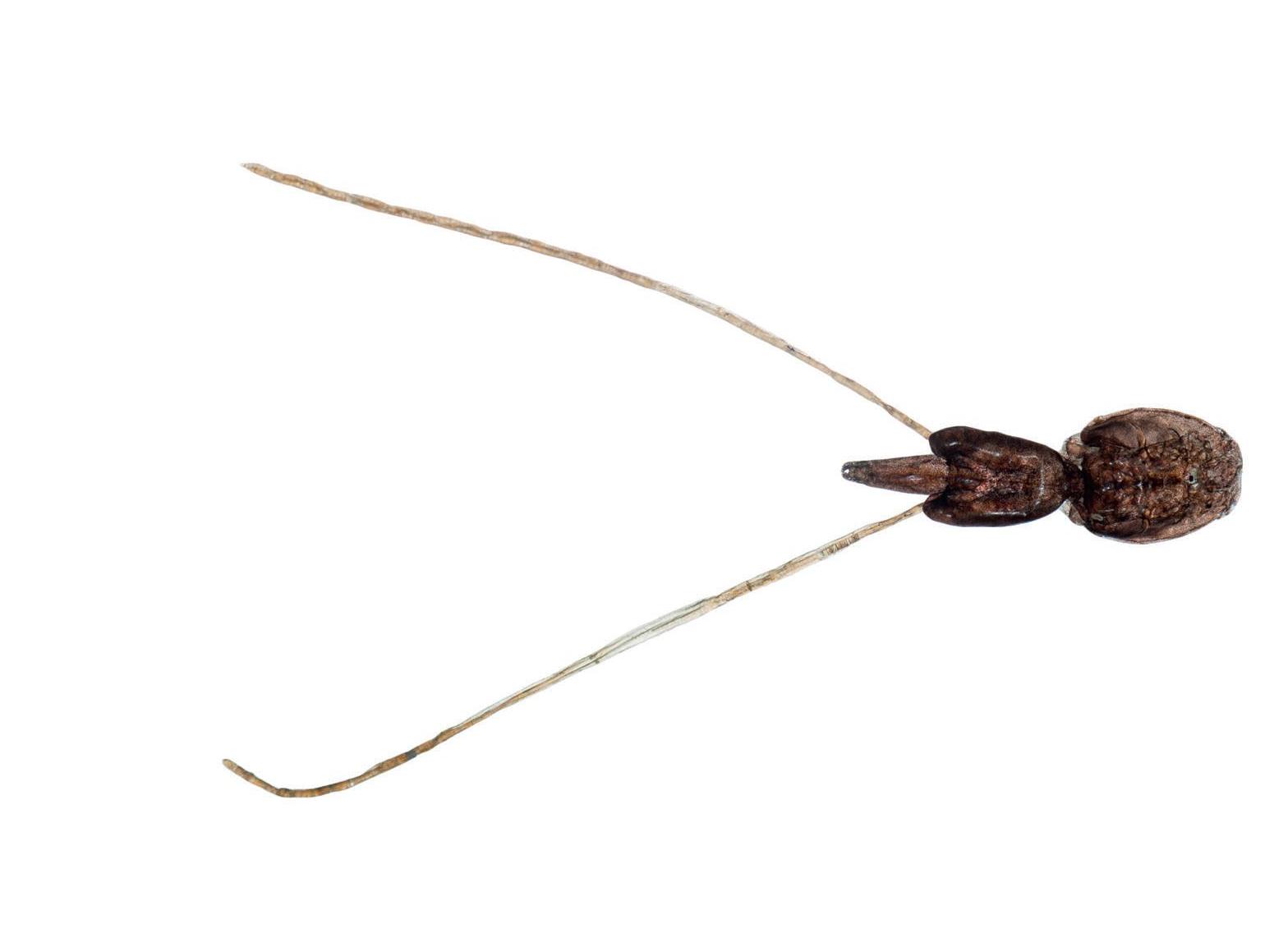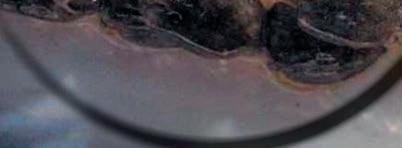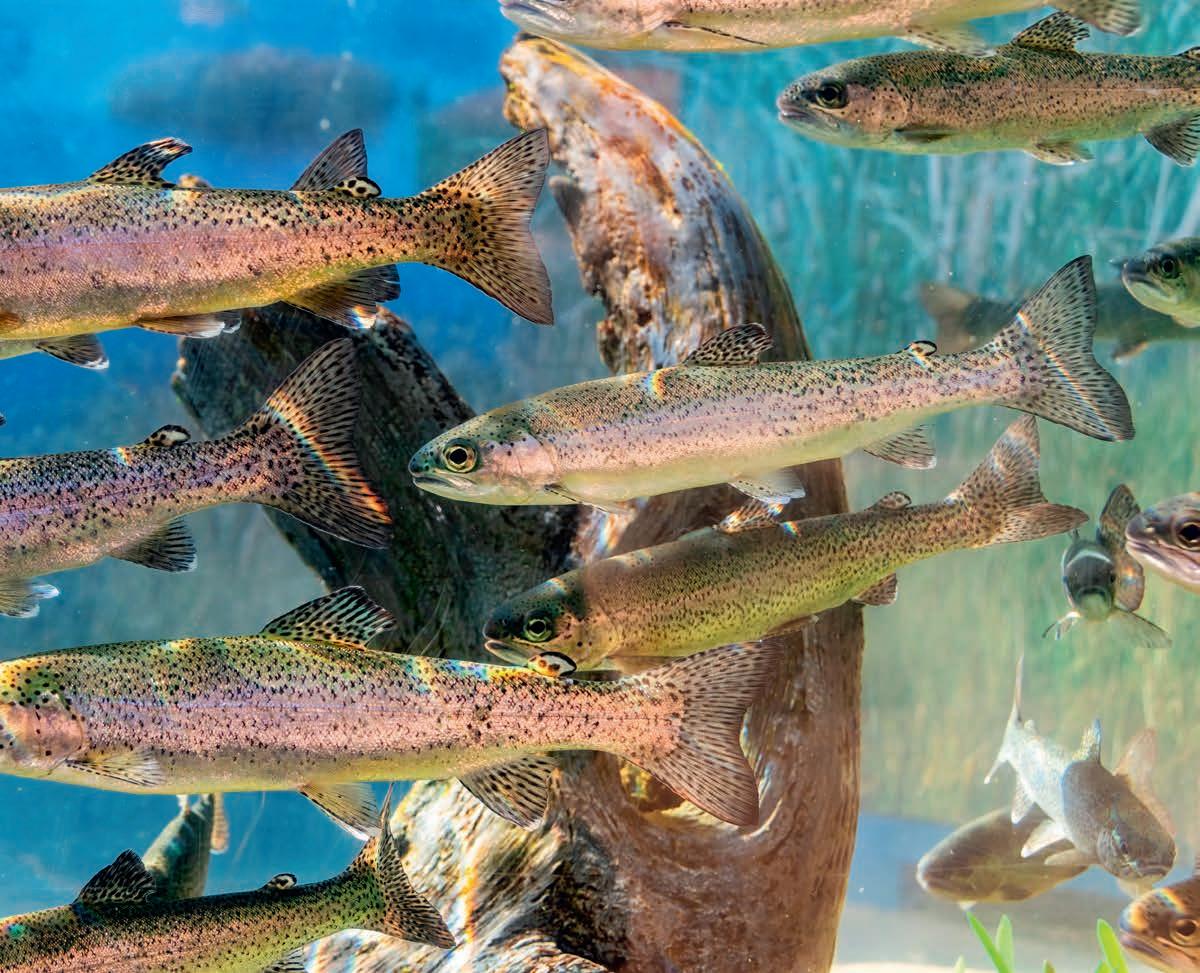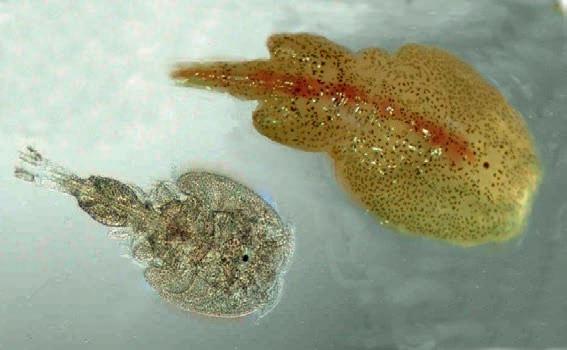
5 minute read
Mar� n Jaff a
BY DR MARTIN JAFFA
The truth about lice
Campaigners who suggest that the open sea is infested with lice do not understand the parasite’s life cycle
If you had to urgently fi nd a person who would help save your life and knew nothing about them, then what you might do is to go out into the street and stop everyone who passed by in the hope of bumping into them. However, you could be looking for ever.
It might be be� er trying to narrow the fi eld, by for example, if the person you sought was a doctor and then you might reduce your search area by targe� ng the local hospital. You might further reduce the search by fi nding out whether the doctor you need works on the day or night shi� , so you could be there at the right � me.
In much the same way, it makes no sense that sea lice larvae would be carried on the sea’s currents and � des in the hope that a poten� al host in the form of a salmon smolt will swim by. The seas around Scotland cover a huge area and sea lice larva are microscopic. Yet, campaigners argue that salmon farms pump out millions of sea lice larvae into the open sea and these infest passing salmon. They say that these infested fi sh will then die, and this is why wild salmon stocks on the west coast have declined so rapidly.
It seems so unlikely that a parasite like sea lice has developed a life strategy that depends on a chance mee� ng with a host. Most parasites have developed very complex life cycles to maximise their prospects.
One of the more interes� ng fi sh parasites is Cymothoa exigua, which targets a variety of fi sh species, but its main target is the rose snapper that lives in the Gulf of California. The parasi� c isopod infi ltrates the gills of the fi sh and latches on to its tongue. It then proceeds to consume the organ, which it replaces with its own body, and it then acts as the tongue for the host fi sh. The ini� al parasite is a male, but if the fi sh is infested by a second male, the fi rst one turns into a female and the two breed. Once the eggs develop and are released then the female lets go of the host and without a tongue the fi sh eventually dies and having successfully bred, so does the female parasite.
Sea lice are not as complex as Cymothoa, but they too must fi nd their host. In the wild, the most likely place for sea lice to meet a host fi sh is at a river mouth where freshwater meets the sea. At this point, the area through which the fi sh must pass is � ny compared to the open sea. Migra� ng smolts also slow down as they leave the river in order to adjust to the changing salinity, so they become easier targets. Sea lice are phototaxic – a� racted to the light – and are drawn to the surface layers through which fi sh are most likely to pass. There is also likely to be some sense of smell or movement involved, as found in freshwater fi sh lice, but this is less clear in the marine species. Unfortunately, most research on sea lice has been directed on the interac� ons with salmon farming. The full life cycle of the lice was only discovered as late as 2013. There is “The lice larvae appeared to be aware that a ready food source was on their doorstep”




Above: Smolt on their way out to sea Left: Sea lice on salmon Right: Sea lice


clearly a lot more to discover, including a be� er understanding of how the lice locate their host in the wild.
It is also thought that larval sea lice arrive at river mouths and estuaries when adult salmon return to freshwater to spawn. Sea lice do not survive the journey into freshwater and drop off as the salinity decreases so eff ec� vely comple� ng the natural marine life cycle.
The ques� on is how does the sea lice’s natural life cycle translate to salmon farming? Industry cri� cs have concluded that there is an alterna� ve scenario in which larval sea lice dri� the seas in the hope of fi nding a moving host. Yet, there is probably a be� er chance that such cri� cs will win the lo� ery. A paper by Emily Nelson and others in 2017 found concentra� ons of larval sea lice in the sea dropped away sharply in a very short distance from salmon pens. The lice larvae appeared to be aware that a ready food source was on their doorstep and stayed around the pens rather than dri� away. With so many poten� al hosts in the salmon pen, it makes li� le sense to move away.
This leaves the ques� on as to how salmon pens become infested, and the likelihood is that lice on passing salmon or sea trout recognise a new host is nearby and transfer to it. It is known that some sea lice stages move from one fi sh to another, as some fi sh recaught in sweep ne� ng sampling have a lower lice count than when ini� ally caught. As the fi sh in salmon pens or experimental sen� nel cages are eff ec� vely tethered in one place, the chance of infesta� on increases compared with those hosts that are free swimming.
We s� ll don’t know that much about the biology of sea lice, but it seems that those whose narra� ve suggests that the seas around Scotland have become a soup of infec� ve sea lice seem to know even less. FF













